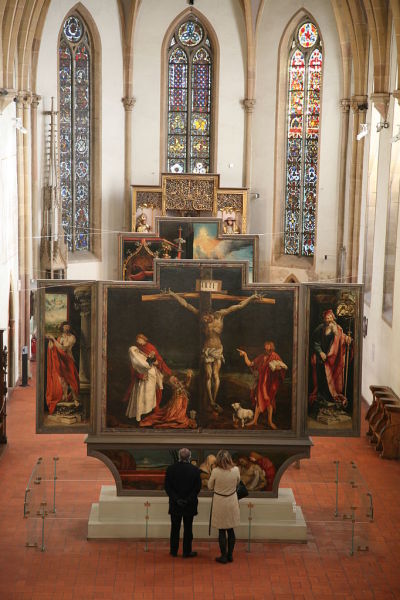The Role of Art in the Church: Beauty, Evangelism, Worship

How big a role does art play in your church's architecture, worship, even witness?
Imagine you have just witnessed to an artist — and he enthusiastically agrees to visit your church. But when he arrives on Sunday, his face drops. There is not a single painting, tapestry, or piece of sculpture, anywhere in the church, with one exception: In a Sunday school classroom, he sees a mass-produced poster depicting Jesus carrying a lamb.
If the same can be said of your church, or mine, we need to ask ourselves why. What does the lack of artistic expression in our churches says about the function of art, and the value we place on artistic works—and those who create them? And what are missing by the absence of art?
We need to think seriously about these questions, and remember how much importance God Himself puts on artistic expression as a means of drawing people to Himself. For example, in the book of Exodus, we read of God's directions to Moses regarding the design of the tabernacle. He gifted and inspired a craftsman named Bezalel with the ability to create the beauty God wanted.
As David McNutt writes in a Christianity Today, "In Bezalel, Scripture provides us with a model not only for faithful engagement with the arts but also for the responsible use of the arts in our evangelism."
The creation of art in the tabernacle was not optional; God commanded it. And far from being relegated to the edges of worship, artistic images in both the tabernacle and the Temple "stood at the heart of the worshipping life of the Israelite people," enabling and aiding their worship of God.
McNutt adds, Bezalel's calling "forces us to reckon with the arts as a way to honor God and fulfill one's vocational task." Ignoring the important role of visual arts should play in church ministry causes artists to feel "isolated, unwelcome, or even betrayed by the church."
God still gifts people with artistic ability—and we ignore their gifts at our peril. Henry Lucey-Lee, Intervarsity Christian Fellowship's national director of Arts Ministry, says that college students "will respond to quality art that conveys the beauty of God." Yes, we still need scriptural teaching, he says, but "art is often the first step college students today will take as they open themselves to Jesus."
Marissa Voytenko, a member of Christians in the Visual Arts, agrees with this approach. "As a painter," she told Christianity Today, "it's easier for me to talk about redemption, equality, beauty, and the love of God through my artwork rather than turning directly to Scripture, though it is obviously informed by that."
Voytenko points to great works of art created over the centuries that point to God's love and sacrifice for us: For example, Mattias Gruenwald's Isenheim Altarpiece, depicting Christ on the cross, "was placed within a hospital during the Bubonic plague to encourage and give the dying hope."
A more famous work is Michaelangelo's Pieta, a sculpture at the Vatican, which hundreds of thousands of people view every year—people who "encounter God's humanity through this portrait of Christ and his mother," Voytenko told us at BreakPoint.
And during the so-called Dark Ages—a time when few people could read–"the monastic community kept the written word of God alive through illuminated manuscripts" such as "the stunning Book of Kells. These images and ornate text no doubt ushered both the artists and viewers into a greater intimacy with God."
These historical examples tell us that, instead of asking whether we should use the arts in ministry, we should instead be asking how we should be using it. One of the missions of the church should be evaluating how the needs of seekers today might be met through the visual arts.
And let's embrace the talents of the artists among us, using their gifts to serve the faithful and glorify God.
Originally posted at Breakpoint.




























